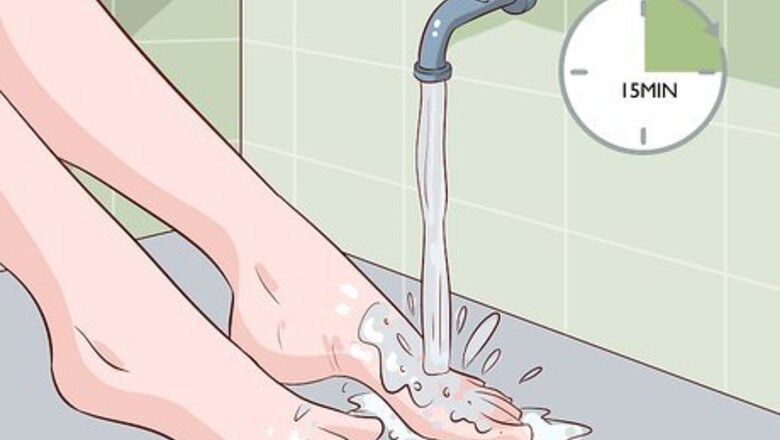
views
Applying First Aid Immediately
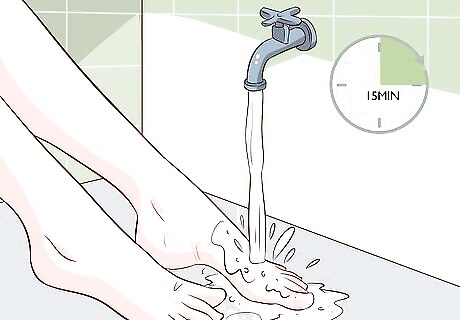
Hold your foot under cool running water for 10-15 minutes. Cool the area off immediately after you receive the burn. Use running water to flush away any particles and bacteria in the wound. For a burn on your foot, going into the shower or bathtub and holding your foot under the faucet is easiest. If you’re outdoors, a garden hose could work as well. Make sure any water you use is clean. Any contamination could cause a serious infection. Do not use ice or ice water. Very cold water can cause further skin damage. Use cool to comfortably cold water. Do not wash out the burn with soap or scrub it in any way. Only run it under cool water. Do not blow on the wound to cool it off. This spreads germs into the burn.
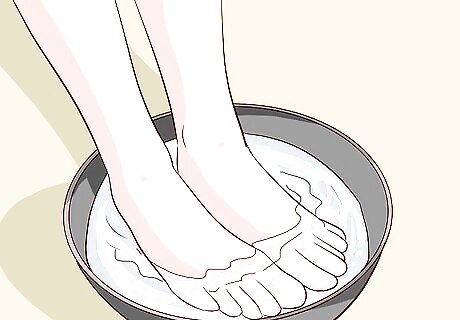
Use a cold compress or water in a bowl if running water isn’t available. While running water is best, use other methods of cooling the area off if you have to. Dip your foot into a bowl of cool water if you have it. If the skin over the burn is still intact, you can also use a cold compress wrapped in a towel. If the burn is severe enough that skin is burned away, don’t apply a could compress. The towel could get stuck to the wound and cause further damage. Remember to make sure any water you use is clean.
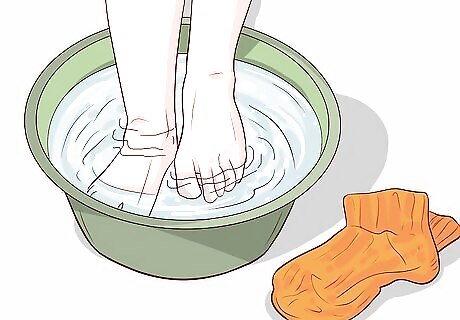
Remove any clothing around the burn area while holding it under water. If you have a sock or shoes on, do your best to remove them. Work them off gently to avoid causing more pain. If the clothing is directly over the burn, leave it in place. Do not pull off any clothing or objects that are stuck to the skin. This will cause more damage. Continue running the wound under water and see if the object dislodges by itself. Otherwise, leave it and let the doctor remove it.

Determine the degree of the burn. The severity of the burn determines how to proceed. After cooling the area and removing any clothing, get a good look at the burn. Assess its degree to determine how severe the burn is. First-degree burns are minor. They only affect the outer layer of skin and cause redness, swelling, and minor pain. Second-degree burns affect deeper skin layers. They cause deep redness, more intense pain, and blistering. Third-degree burns completely burn away the outer layer of skin. The skin may be black or white. You may also feel numbness due to nerve damage. Never try to treat a second or third degree burn by yourself. These are serious injuries that require medical attention immediately.
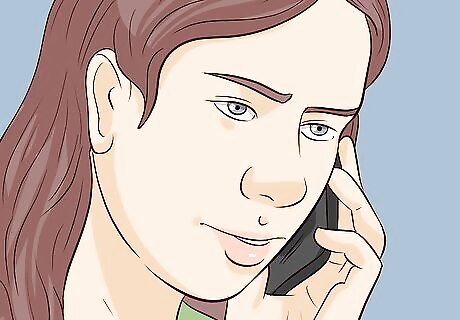
Call your doctor if the burn is severe or covers a large area of your foot. Minor first-degree burns that cover a small area can be treated at home without a doctor's intervention. Burns over large areas, like the entire bottom of your foot, require a doctor's attention. Additionally, second and third-degree burns on your foot always need medical attention, no matter how small. Call your doctor as soon as possible and explain the burn you received. Then follow their directions on how to proceed next. Your doctor may want to inspect the burn firsthand. Make an appointment as soon as possible. If the burn is severe enough, your doctor may tell you to go to the hospital. Listen to these directions and receive medical attention as soon as possible. Contacting your doctor is especially important if you have diabetes or another condition that inhibits your circulation.
Treating Minor Burns

Apply moisturizing lotion or medical honey directly to the affected area. Aloe vera, medical honey, or a similar lotion can help keep the skin moist and promote healing. Apply a very thin layer of moisturizer to the burn before wrapping it with gauze. Use only gentle, fragrance-free moisturizers to avoid irritating your skin. If the skin is broken, check with your doctor before applying any lotion. The doctor may not recommend using lotion on more serious burns. Talk with your doctor about using medical grade honey on irritated or infected burnt skin. Some studies indicate that medical grade honey can help to heal infections.
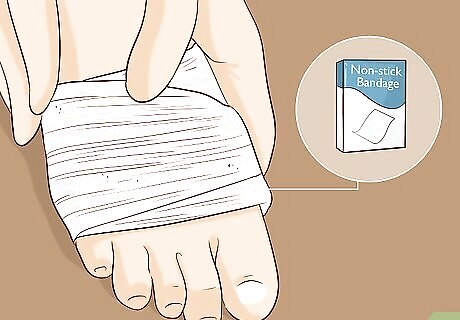
Cover the burn with a bandage to prevent it from rubbing on your clothes. Even minor burns on your foot can be very painful because your socks and shoes rub against the injury. Use a sterile, non-stick bandage to cover the burn and prevent rubbing. Use a strip of medical tape to secure the bandage. Do not apply the tape directly to the burn. This will be very painful to remove.
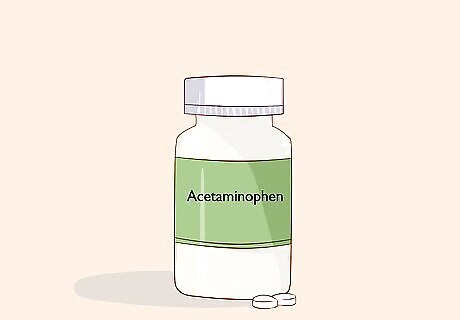
Take over-the-counter pain relievers to help with the pain. Medication can also make it easier to get around while you recover. Both NSAIDs and acetaminophen help reduce your pain, so take either drug type. Take a dose every 4-6 hours for a consistent effect. Take all medication as instructed. Don’t double-up on doses or take them for longer than the instructions say. Make sure you don’t have any drug allergies before taking pain relievers. Allergies to NSAIDs are common.
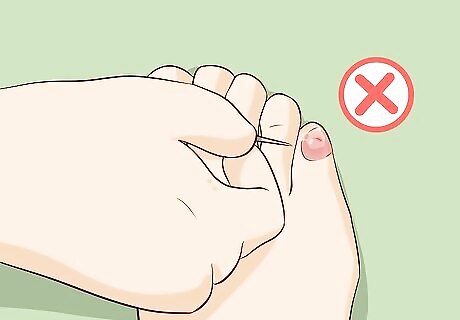
Avoid popping or breaking blisters. Blisters may form on more serious burns. Leave them alone. Blisters form to help your skin heal, and breaking them can cause an infection. Don’t scratch or pick at the burn, and wear loose-fitting shoes so the blisters don’t burst. If the burn itches, take an antihistamine medication to prevent yourself from scratching. If the blisters grow very large and uncomfortable, talk to your doctor about it. They may want to drain the blisters. But never do this yourself.
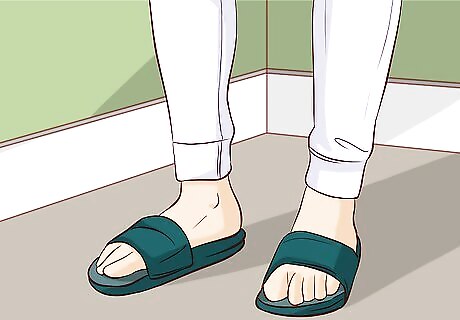
Wear loose-fitting shoes or sandals. Tight shoes will rub against the burn and cause pain. Try wearing your loosest pair or getting a pair a size bigger to make walking easier. Alternatively, wear open sandals that don’t rub against the spot your burn is in. Consult your doctor about getting a pair of orthopedic shoes while you recover. These are designed for comfort and support, and may make your recovery process much easier. If your skin is broken and you do wear sandals, be sure to wrap your burn well. Dirt and bacteria could enter the wound when you go outside.
Caring for Severe Burns
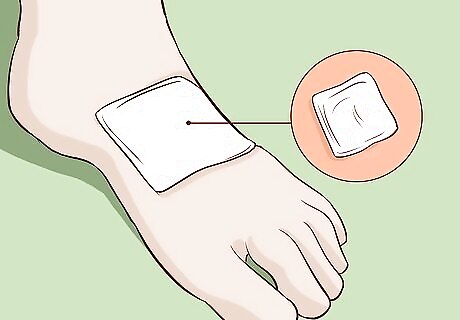
Cover the burn with sterile, non-stick gauze. Keep the burn covered to prevent bacteria and dirt from causing an infection. Covering the wound also prevents your socks or shoes from rubbing on the burn, which helps with the pain. Get sterile, non-stick gauze from a pharmacy and wrap your foot loosely. If you have to, use some surgical tape to secure the gauze. Do not wrap the surgical tape around your foot. This cuts off the circulation and slows healing. Only put a strip along your skin so the gauze stays in place. Don’t use cotton or a similar product with fibers. These fibers will get stuck on your skin. Change your bandage at least once a day. Also change the bandage any time it gets wet.
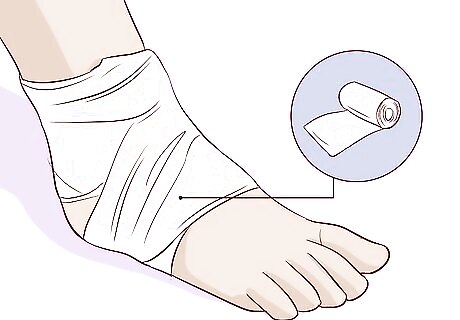
Wrap your toes individually if they’re burned. Otherwise the skin on your toes could get stuck together during the healing process. Carefully tuck the gauze between each toe and wrap them individually for the best healing results. If your toes do stick together, hold them under warm running water to gently work them apart.

Keep your foot elevated for 24-48 hours to reduce swelling. More serious burns may cause significant swelling within the first 48 hours after the injury. If you’re experiencing swelling, elevate your foot to draw blood away from the area. For the best results, raise your foot above your heart level. For a good elevation position, lay back on a couch. Then place your burned foot on the armrest. Place 1 or 2 pillows under your foot in bed to keep it elevated.
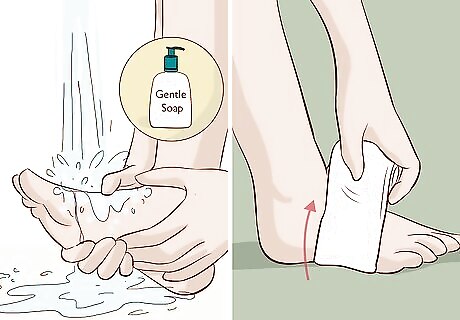
Clean the burn with gentle soap and cover it with a new bandage daily. Gently unwrap your burn and discard the old gauze. Then hold the burn under cool running water and wash it carefully with gentle soap. Pat it dry with a clean towel or gauze, then re-wrap it with fresh gauze. Ask your doctor about using soap. For more serious burns, doctors don’t recommend using soap. If any gauze gets stuck to your burn, don’t pull them off. Soak your foot in water to loosen the gauze, then gently remove them.
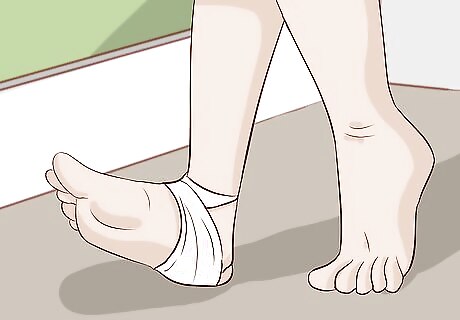
Move as normally as you can so the skin heals properly. While it may be painful to walk normally with a burn on your foot, try your best to do so. If you keep your foot completely immobile, the new skin may grow in too tightly. This makes moving your foot uncomfortable after the wound heals. Walk as normally as you can to promote normal healing.
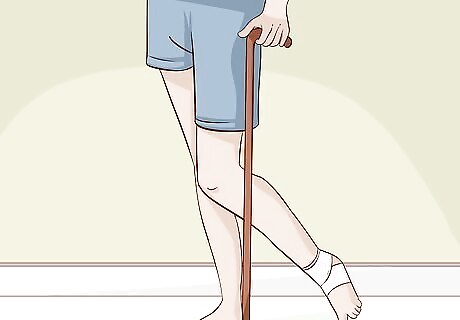
Use a cane if walking on the burn hurts. This is especially important if the burn is on the bottom of your foot. Putting any weight on the burn may be painful. Walking with a cane can increase your mobility and decrease your pain levels. Doctors sometimes rent canes to patients while they recover. Speak with your doctor to see if they provide this service or can point you towards someone who does. Some insurance plans cover canes and crutches if you need them. Check with older relatives or neighbors to see if they have an extra cane lying around.



















Comments
0 comment